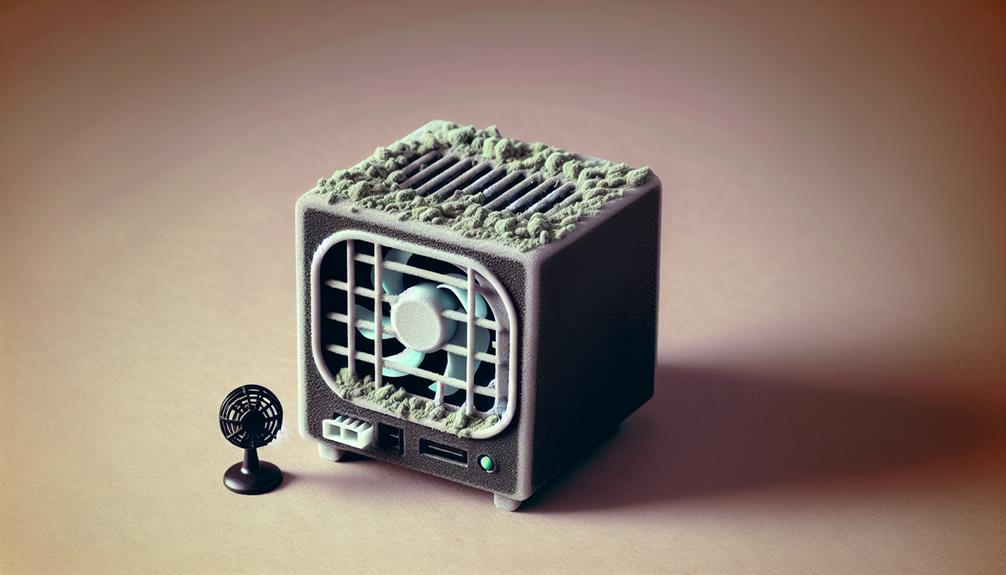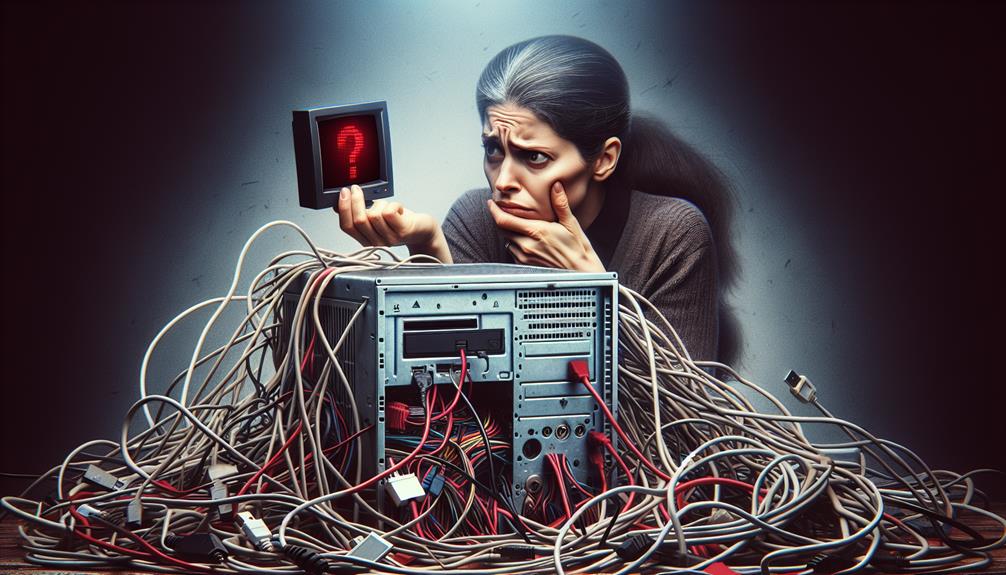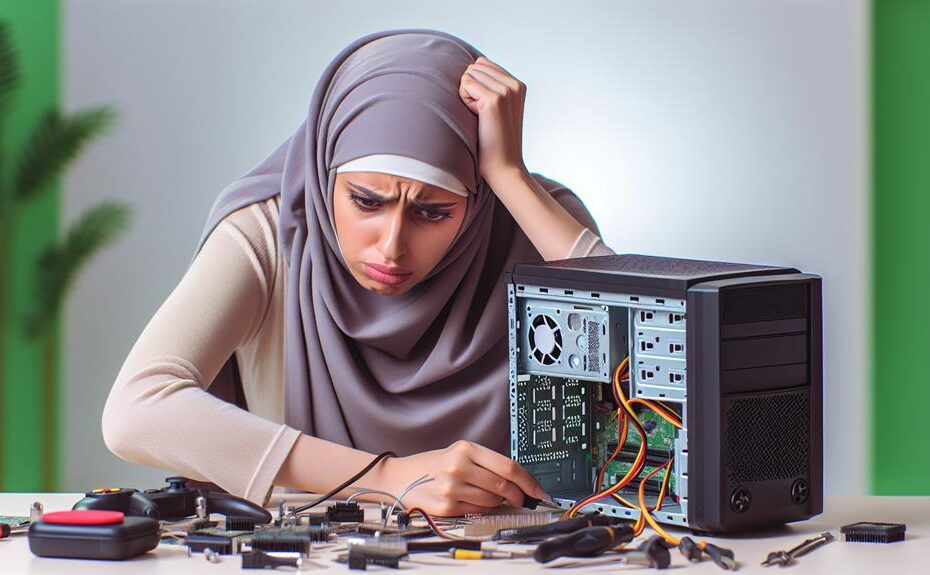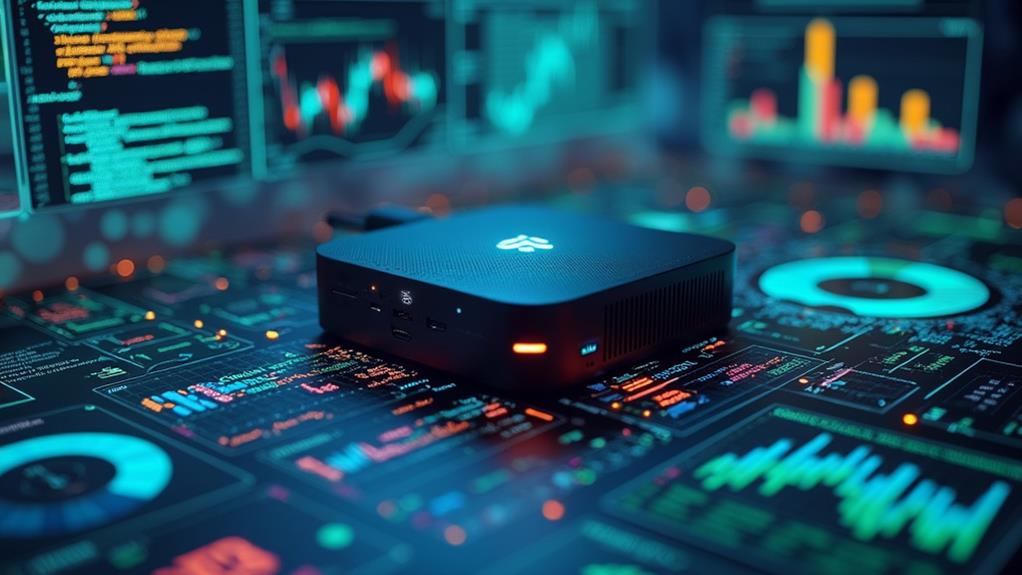



To troubleshoot common mini PC issues, check all cables for damage, validate network connections, and watch out for Wi-Fi interference. Optimize system settings, upgrade memory if needed, and keep drivers updated for better performance. Prevent overheating with thermal paste and clean fans regularly. Address software glitches by updating, checking compatibility, and running scans. Confirm secure hardware connections and monitor for malfunctions. Verify power cables are secure and use appropriate adapters to avoid disruptions. Taking these steps can help resolve many common issues efficiently.
Key Takeaways
- Check all cable connections for damage or looseness.
- Update drivers and optimize system resource allocation.
- Monitor and address overheating concerns promptly.
- Conduct diagnostic tests to identify software glitches.
- Inspect hardware components for secure attachment and functionality.
Connectivity Problems
If you are experiencing connectivity problems with your mini PC, the first step is to check all cables and connections for any loose or damaged components. Confirm that the Ethernet connection is secure and properly plugged in to guarantee stable internet access. If using Wi-Fi, be mindful of potential Wi-Fi interference from other devices or obstacles that may hinder the signal strength.
For display-related issues, verify the HDMI output connection to the monitor or TV. Sometimes, a loose HDMI cable can cause display problems. Make sure the HDMI cable is firmly inserted into both the mini PC and the display device.
In case you are encountering Bluetooth pairing issues, make certain that the Bluetooth device is within range and in pairing mode. Turn off any other nearby Bluetooth devices that might be causing interference. If problems persist, try unpairing and re-pairing the devices to establish a fresh connection. By following these steps, you can troubleshoot common connectivity problems with your mini PC efficiently.
Slow Performance
To address slow performance on your mini PC, evaluate the system's resource allocation and optimize settings as needed. Start by checking the available memory. If your mini PC is running low on memory, consider memory upgrades to enhance performance. Insufficient memory can result in sluggish behavior when running multiple applications or demanding tasks. Also, make sure your drivers are up to date. Outdated drivers can cause compatibility issues and impede the overall system performance. Regularly updating drivers, particularly graphics and chipset drivers, can help improve the speed and efficiency of your mini PC. Moreover, optimize your system settings by disabling unnecessary startup programs and background processes that consume resources. By managing resource allocation effectively and keeping up with memory upgrades and driver updates, you can boost the performance of your mini PC and enjoy a smoother computing experience.
Overheating Concerns

Monitor the cooling system of your mini PC to prevent overheating concerns. To address overheating, consider implementing cooling solutions such as applying high-quality thermal paste to guarantee ideal heat transfer between the CPU and the heatsink. Additionally, regularly check and clean the internal fans to prevent dust buildup that can obstruct airflow.
Fan maintenance is vital for efficient cooling. Ensure fans are free from dust and debris, and that they are operating correctly. Optimize airflow within the mini PC by organizing cables to allow for better ventilation. Consider adding additional fans or upgrading existing ones if necessary to improve airflow and reduce temperatures.
Regularly monitoring the temperature of your mini PC using software can help you identify potential overheating issues before they become critical. If you notice consistently high temperatures, take immediate action to troubleshoot and resolve the problem to prevent damage to internal components. By staying proactive and maintaining your mini PC's cooling system, you can alleviate overheating concerns and ensure peak performance.
Software Glitches
For addressing software glitches on your mini PC, it is important to conduct thorough diagnostic tests to pinpoint the root causes accurately. When encountering software issues, start by ensuring your system is up to date with the latest software updates. System updates often contain bug fixes and patches that can resolve common software problems. Additionally, checking for driver compatibility is essential. Incompatibility between your hardware components and drivers can lead to malfunctions and glitches.
To troubleshoot software glitches effectively, explore the Event Viewer tool in Windows or the Console app on macOS to identify error messages and logs that might provide insights into the issue. Running a malware scan using reputable antivirus software is essential to rule out any malicious programs causing disruptions.
Hardware Malfunctions

Are hardware malfunctions affecting the performance of your mini PC? Component failure can lead to a variety of issues, such as system reboots. When a hardware component malfunctions, it can disrupt the normal operation of your mini PC, causing instability and performance degradation.
To troubleshoot hardware malfunctions, start by checking the connections of all components inside your mini PC. Loose connections can sometimes be the culprit behind component failure. Inspect the RAM modules, graphics card, storage drives, and other peripherals to make sure they are securely attached to the motherboard.
If you suspect a specific component is failing, consider running diagnostic tests to identify the problem. Many manufacturers provide diagnostic tools that can help pinpoint hardware malfunctions. Additionally, monitoring the system's temperature and voltage levels can give you insights into potential issues that may be causing system reboots.
Power Supply Issues
If you are experiencing system reboots or instability, one common culprit to investigate is potential power supply issues within your mini PC. Voltage fluctuations and power surges can wreak havoc on the stability of your system. To troubleshoot this, start by checking the cable management within your mini PC. Confirm that all power cables are securely connected and not frayed or damaged, as loose connections can lead to power disruptions.
Another aspect to take into account is adapter compatibility. Using the wrong adapter or one with insufficient power output can result in inadequate supply to your mini PC components, causing reboots or system instability. Make sure that the adapter you are using matches the power requirements of your mini PC.
Disclosure: As an Amazon Associate, I earn from qualifying purchases.




